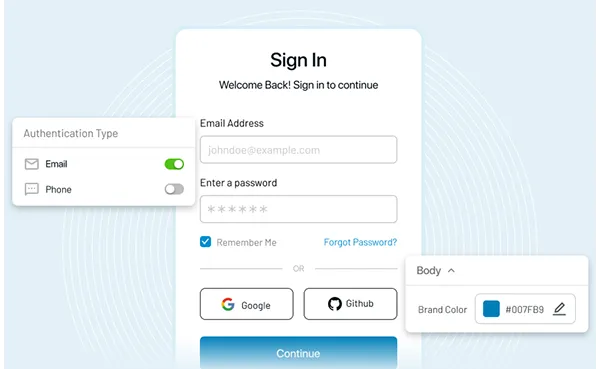Introduction
In today's digital landscape, where trust and security are paramount, businesses face the challenge of balancing identity verification throughout the customer journey. While robust verification measures are necessary to mitigate risks and comply with regulations, delivering a seamless and frictionless experience is equally important.
Everyone admires and expects a great user experience when they land on any web platform or mobile app. And brands that are aware of their customers’ preferences always ensure their customers' journey remains seamless, secure, and valuable.
And thus, businesses must emphasize striking the right balance between a great user experience and security since they are crucial for building trust, driving customer satisfaction, and fostering long-term relationships.
Let’s dive into the complexities of balancing identity verification and explore strategies to achieve harmony in the customer journey.
Understanding the Importance of Identity Verification
Identity verification serves as the bedrock for establishing trust in digital transactions. It is critical in mitigating risks, preventing fraud, and protecting sensitive customer data.
By emphasizing the significance of identity verification, businesses can appreciate the potential consequences of inadequate verification processes, thereby recognizing the need to find equilibrium.
Challenges in Balancing Identity Verification with Customer Experience
Balancing identity verification throughout the customer journey is not without its challenges. Excessive verification requirements can introduce friction and lead to customer drop-offs, resulting in poor user experience.
Conversely, insufficient verification measures can expose businesses to identity theft and financial losses. Identifying these challenges allows organizations to address them and find practical solutions proactively.
Here’s the list of actionable strategies that businesses can employ to achieve harmony in identity verification across the customer journey:
Risk-based authentication
Adopting a risk-based approach allows businesses to calibrate the verification level according to the perceived risk associated with each interaction. By tailoring verification requirements based on factors such as transaction value, user behavior, and historical data, businesses can strike a balance between security and user experience.
Leveraging advanced authentication technologies
Integrating advanced technologies, such as biometrics (e.g., fingerprint or facial recognition) and machine learning, can enhance the verification process while ensuring a seamless customer experience. These technologies provide a secure and user-friendly alternative to traditional verification methods, reducing friction and increasing convenience.
Clear communication and transparency
Building trust with customers necessitates transparent communication about the purpose and necessity of verification. Explaining the verification requirements and how they contribute to security and privacy can alleviate customer concerns and enhance their willingness to participate.
Implementing a Seamless Customer Experience:
A harmonious customer journey is integral to successful identity verification. Businesses should strive to integrate identity verification seamlessly into their processes, minimizing disruptions to the customer experience. Key strategies include:
User-friendly verification methods
Simplifying the verification process by offering intuitive interfaces, minimizing data entry, and providing clear instructions can improve customer satisfaction and reduce abandonment rates.
Optimizing mobile experiences
With the increasing prevalence of mobile devices, optimizing the verification process for mobile users is crucial. Implementing mobile-responsive designs, leveraging mobile biometrics, and utilizing device recognition technologies can enhance convenience and ensure a seamless experience.
Streamlining verification across touchpoints
Ensuring consistency and coherence in the verification process across different touchpoints (e.g., website, mobile app, customer support) helps avoid customer confusion and frustration. Integrating verification seamlessly into the customer journey, irrespective of the channel, enhance user experience and reduces potential friction points.
The Future of Identity Verification
Looking ahead, the future of identity verification holds exciting possibilities. Emerging trends such as decentralized identity solutions, zero-trust frameworks, and the potential impact of blockchain technology are reshaping the landscape.
Businesses must stay abreast of these developments to proactively adapt their identity verification practices, aligning with evolving customer needs and regulatory requirements.
To Conclude
Achieving harmony in identity verification across the customer journey is a delicate yet vital objective for businesses.
Organizations can foster trust, enhance customer satisfaction, and drive long-term success by finding the right balance between robust security measures and a seamless customer experience.
Through the strategic implementation of technology, adaptive verification processes, and a customer-centric approach, businesses can navigate the complexities of identity verification while ensuring a pleasant customer journey in today's digital landscape.

















